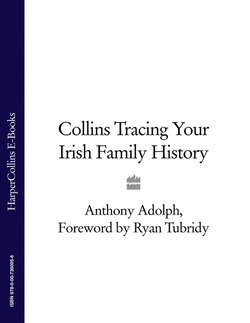Читать книгу Collins Tracing Your Irish Family History - Ryan Tubridy, Anthony Adolph - Страница 14
Workhouses
ОглавлениеIreland’s 163 Poor Law Unions, each with its own workhouse, were established to distribute relief to the poor in 1838, uncannily anticipating the Great Famine. Before then, relief had been ‘outdoor’, handed out to people in their own homes, but from 1838, if you wanted help, you had to submit to the appalling conditions of the workhouses.
Workhouses were supposed to be unpleasant enough to discourage all but the genuinely needy. Life for most, however, was so bad that, as one of the Poor Law Commissioners wrote, ‘it must be obvious to anyone conversant with the habits and mode of living of the Irish people that to establish a dietary [system] in the workhouse inferior to the ordinary diet of the poor classes would be difficult, if not, in many cases, impossible.’ Instead, the authorities enforced draconian working regimes lasting 7 am to 8 pm, with card-playing and alcohol banned and most misdemeanours punishable by flogging.
Thanks to the Great Famine, the workhouses were overflowing by autumn 1845. Disease became rife, and the way to the workhouse became known as Cosan na Marbh – ‘the pathway of the dead’. Up to 25 per cent of those admitted died, along with many staff: even Lord Lurgan, chairman of the Lurgan Board of Guardians of the Poor, succumbed to fever in 1847. In 1848, outdoor relief was adopted again, but for many it was far too late.
